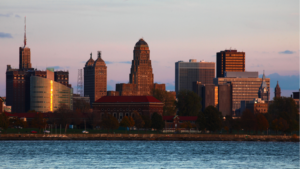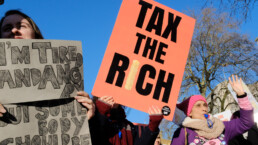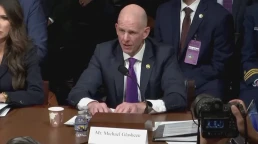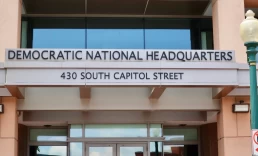In October of 2022, OCAB, along with 11 co-petitioners filed an Article 78 lawsuit arguing that the city had violated New York Open Meetings Law, the Buffalo City Charter, and their rights to meaningfully engage with the redistricting process
By Amber Powers, Our City Action Buffalo
 To contribute to OCAB’s legal fund, click HERE.
To contribute to OCAB’s legal fund, click HERE.
On May 14th, 2022, a terrorist entered a Buffalo, New York supermarket and murdered 10 innocent shoppers in an appalling act that gained international attention. As with every act of mass murder by firearm, the tragedy sparked a national conversation on the topic of gun control, violence, and mental health. However, this mass shooting also put racial tension back into focus. The gunman in this case was a white supremacist, radicalized online and a subscriber to the “great replacement theory”; once a fringe concept made mainstream by Fox News pundits and right-wing politicians.
The terrorist had wanted to kill as many Black and brown people as possible. In an action that feels mundane had it not been so sinister, the gunman had simply asked Google which zip codes in New York State had had the highest concentration of African Americans, and chose a neighborhood on Buffalo’s East side, since it had the highest concentration Black people per capita outside of New York City and was within driving distance of his upstate New York home. What’s more, it was located in a place where food aparthaid exists, with only one supermarket in the entire neighborhood. He knew the grocery store would be busy on a Saturday.
There was an outpouring of donations and words of support locally and abroad in the wake of the massacre. “Buffalove” is a common phrase uttered locally, which represents Buffalonians propensity to offer a helping hand to neighbors in need. People from all over the city and surrounding suburbs came to the East Side, many for the first time in their lives, to help provide groceries and support. The Buffalo Bills played a charity baseball game, local apparel businesses designed t-shirts, and politicians stood in front of grocery donations and denounced racism and warned that white supremacists were not welcome in Buffalo.
Meanwhile, amidst the fundraisers and photo ops, the “City of Good Neighbors” was harboring a dirty secret. Largely unacknowledged by those locals decrying racism, Buffalo is one of the most statistically and economically segregated cities in America and ranks amongst the highest in poverty and income inequality. Buffalo’s East Side had not become a segregated “food desert” by happenstance. A series of policies created by local politicians for the past century had ensured that the interests of affluent white residents came at the expense of the Black and brown ones.
The construction of the 33 expressway had been constructed in the 1960’s so that white suburbanites could travel downtown and bypass the Black neighborhoods in their path. This effectively cut Black residents off figuratively and literally from the rest of the city. Policies such as redlining, over-policing, and the slashing of public investment in the East Side helped to guarantee that social mobility would be nearly impossible for the residents of those neighborhoods. 11 years prior to the tragedy, The Buffalo Common Council had created a gerrymandered Council map, which made two council districts that were whiter and therefore more winnable to two of the sitting councilmen at the time.
Just 4 days following the May 14th Tragedy, while the city was grieving the loss of 10 of its own, the Buffalo Common Council quietly unveiled its new Common Council map, updated to account for the population changes revealed by the 2020 census. The map had maintained the gerrymandered districts of the decade prior, with minor alterations to the district borders. The Council had not solicited public input in the redrawing of the map, and had not publicized the Citizens Advisory Commission on Reapportionment meetings nor rationale. The Council had hoped that by not publicizing the redistricting (sometimes referred to as “reapportionment”) process, they would be able to maintain the gerrymandered districts and consequently handily win re-election in 2023.
That would have been the case if not for an organization called Our City Action Buffalo. OCAB is a broad coalition of Buffalo residents who have come together to disrupt the political status quo through movement and people-centered politics and co-governance structures. The organization works to change systems and to shape policies to ensure racial, social, and economic justice for all Buffalonians.
By law, the Common Council had to hold at least one public hearing to receive input from residents on the proposed map. The Council did not widely publicize this hearing, it was instead OCAB that drove a social media outreach campaign calling attention to the gerrymandered map. OCAB’s social media posts calling for hearing attendees gained thousands of interactions. As a result, the hearing on May 28th, 2022 drew hundreds of attendees in person and virtually, all of the roughly 100 public commenters unanimously criticizing the Council’s map as gerrymandered, nonsensical and racist. This hearing was a stark contrast to the May 18th meeting which had been relatively uneventful and attended by only one person.
Despite the overwhelming public backlash to the Council’s map, the Council unanimously passed in July of that summer. Then came time, again by law, for Mayor Byron Brown to hold a public hearing. Again, that hearing was widely attended, despite poor communication from the Mayor’s office, and the fact that the meeting was scheduled at 10am on a Wednesday morning, an inconvenient time slot for most working class people. Again, the attendees as well as online commenters criticized the map, with all but one person condemning the map and many specifically asking him to veto it.
It came as a surprise to very few who pay attention to city politics when the Mayor confirmed the map and signed it into law. At that point, feelings of defeat and helplessness compelled many to give up the fight. However, OCAB is composed of brilliant people who possess large amounts of resilience and grit. They were not ready to back down and accept the City’s map.
In October of 2022, OCAB, along with 11 co-petitioners filed an Article 78 lawsuit against the Buffalo Common Council, the Mayor, and the Erie County board of Elections, arguing that the city had violated New York Open Meetings Law, the Buffalo City Charter, and their rights to meaningfully engage with the redistricting process. Dr. Russel Weaver, a PhD Geographer at Cornell University, wrote an 80 page expert report pro bono on behalf of OCAB detailing how the City’s proposed map was unfair, gerrymandered, and that the redistricting process had been executed poorly and in bad faith.
Using taxpayer funds, the city has responded to the lawsuit by hiring a partner at a top Buffalo law firm and commissioned their own experts to pen a report attacking the petitioners. However, the rebuttal fails to address the specific injuries the petitioners claimed. The City’s expert witnesses charged $950/hour for the service. The lawsuit will be heard by the state supreme court on Wednesday, December 7th, and a decision is expected by January.
Although the Council and the mayor have access to tax dollars to defend a map that does its own taxpayers a disservice, OCAB is funding the legal fight entirely from member and public contributions. They have raised over $25,000 so far via grassroot efforts but are still falling short of the total needed to wage the fight. OCAB is humbly asking for support in our fight for fair maps.
To contribute to OCAB’s legal fund, click HERE.
To read more about the specifics of the redistricting process and the fight that occurred earlier this summer, check out this article by Buffalo journalist Geoff Kelly for The Nation: https://www.thenation.com/
Recent Posts
We’re Making ‘Tax the Rich’ More Than a Slogan
December 14, 2025
Take Action Now “Workers Over Billionaires” was the slogan on Labor Day. It should be the slogan every day.By Max Page, Labor Notes Taxing the…
‘Total Amateur Hour’: FBI Official Says Antifa Is #1 Threat in US—But Can’t Say Where, Who, or What It Is
December 13, 2025
Take Action Now “Just a complete admission here that the entire ‘antifa’ threat narrative is totally manufactured by this administration,” said one…
Utah Leaders Are Hindering Efforts To Develop Solar Despite A Goal To Double The State’s Energy Supply
December 12, 2025
Take Action Now Utah Governor Spencer Cox signed bills that will make it more difficult and expensive to develop and produce solar energy, ending tax…
Report of the Independent Democratic Task Force on U.S. Policy Toward Israel
December 12, 2025
Take Action Now For release in connection with the winter meeting of the Democratic National Committee convening on December 11, 2025 in Los Angeles……




